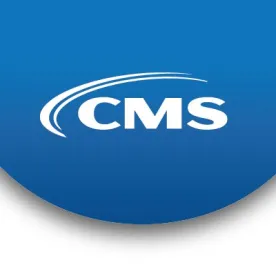In recent years, there has been a trend towards the provision of cardiovascular procedures in the outpatient setting and particularly in ambulatory surgery centers (“ASCs”). This trend is in part motivated by the fact that outpatient cardiovascular services, in comparison to cardiovascular services performed on an inpatient basis, tend to be less expensive and offer greater comfort and convenience for patients.[i] As a result of the emphasis on outpatient cardiovascular services, there is growing interest in the development and expansion of cardiovascular programs in ASCs.
CMS Leading the Way
The trend towards the provision of cardiovascular services in the ASC setting is largely driven by the Centers for Medicare & Medicaid Services (“CMS”) and the addition of cardiovascular CPT codes to the list of Medicare-covered ASC surgical procedures over the last few years. In 2018, the Medicare program added 17 cardiac catheterization-related procedures to the 2019 list of Medicare-covered ASC procedures.[ii]
In 2019, CMS issued a final rule authorizing the provision of percutaneous coronary interventions (“PCI”) in the ASC setting by approving the addition of 6 CPT codes to the ASC-covered procedures list for 2020.[iii] These CPT codes include: (i) Percutaneous transluminal coronary angioplasty (“PTCA”); single major coronary artery or branch; (ii) PTCA; each additional branch of a major coronary artery; (iii) percutaneous transcatheter placement of intracoronary stents with coronary angioplasty; single major coronary artery or branch; (iv) percutaneous transcatheter placement of intracoronary stents with coronary angioplasty; each additional branch; (v) percutaneous transcatheter placement of drug-eluting intracoronary stents with coronary angioplasty; single major coronary artery or branch; and (vi) percutaneous transcatheter placement of drug-eluting intracoronary stents with coronary angioplasty; each additional branch.[iv]
ASC Cardiovascular Program Models
ASCs are primarily developing cardiovascular programs using two models: (i) a co-management model and (ii) a “hybrid model.” For the co-management model, the ASC contracts with a cardiovascular medical group to develop, implement and manage a cardiovascular program within the ASC facility. The “hybrid model” involves the co-location of a freestanding office-based laboratory, catheterization laboratory or vascular access center within the ASC facility.
The hybrid facility alternates as an office-based laboratory (“OBL”) or an ASC for different purposes on different days, with the OBL and the ASC maintaining separate tax identification numbers and National Provider Identification (“NPI”) numbers. The ASC and OBL are billed differently and have different reimbursement rates for the same procedures. The ASC receives facility fees and only performs procedures from a Medicare-approved list while the OBL receives an enhanced professional fee that combines a fee for the physician and fees for covering the expense of doing the procedure in the OBL. In addition, a specific procedure may be billed at a higher or lower rate depending on whether it is provided by the ASC or the OBL.[v]
Since the OBL and ASC need to remain distinct even though they occupy the same space, there needs to be a temporal separation between the entities. This is commonly satisfied by operating the ASC and OBL on different days, but some hybrid entities operate the ASC and OBL on the same day but ensure that all of the patients have exited the facility prior to switching to the other use. Separate medical records need to be maintained as well and cannot be accessible to the other entity.[vi] While the “hybrid model” can be challenging to set up, it is the model which allows the broadest range of cardiovascular services to be provided within the ASC facility.
In California, which currently only allows certain general acute care hospitals and licensed cardiac catheterization laboratories to provide cardiac catheterization services, the “hybrid model” essentially brings a licensed cardiac catheterization laboratory into the ASC facility, which creates an opportunity to bring a broader range of cardiovascular services into the cardiovascular program than would otherwise be possible under a co-management arrangement.
Change Comes to California
As noted above, California’s restrictions regarding the provision of cardiac catherization services does not allow the provision of such services in a ASC. However, recent legislation shows the state’s trajectory towards the softening of this restriction to permit ASCs to perform such cardiac catherization procedures.
On February 21, 2020, Assembly Bill No. 3083, “The California Outpatient Cardiovascular Patient Safety, Cost Reduction, and Quality Improvement Act” (the “Bill”), was introduced in the California State Assembly. The Bill authorizes the State Department of Public Health to certify certain ASCs to provide elective cardiac catheterization laboratory services, elective percutaneous transluminal coronary angioplasty and stent placement for eligible patients. If passed, starting on January 1, 2021, ASCs certified to participate in the Medicare program, which meet certain requirements, will be able to perform cardiac catheterization laboratory services on an outpatient basis.
State Considerations to ASC Cardiovascular Program Development
The ability for ASCs to establish cardiovascular programs is highly state specific. For example, the “hybrid” model is not available in every state since about one third of the states do not permit the simultaneous operation and co-location of an OBL and ASC. Some states do not allow certain types of cardiovascular procedures, such as PCI, to occur in the ASC setting.[vii] Moreover, some states require ASCs participating in the “hybrid” model to have a separate entrance and exit, separate scheduling, and separate payor contracts for the co-located ASC and office-based laboratory.[viii]
In addition, most states have an application process for an ASC to add a new service line and/or expand an existing service line, such as cardiovascular. This process can take six months to one year in non-Certificate of Need (“CON”) states, and even longer in CON states since the applicant has to obtain the approval from the state’s CON board or department of planning, which takes on average 6 to 12 months.[ix] The Washington Department of Health, for example, requires the submission of an application for a CON to contract an ASC or to offer certain new tertiary health services, including open heart surgery and therapeutic cardiac catheterization.[x]
********
We imagine the trend towards the provision of outpatient surgical services in the ASC setting to continue as CMS continues to increase the number of ASC cardiovascular procedures reimbursable under Medicare and states weaken their unfavorable restrictions. This trend will likely become more prominent when ASCs are allowed to provide elective procedures as a result of states “opening up” and people and businesses are released from quarantine.
We will continue to provide updates regarding changes to the ASC cardiovascular space.
FOOTNOTES
[i] Jennifer Lubell, “Cardiovascular services: The next wave in ASCs?,” May 17, 2019, https://www.ormanager.com/cardiovascular-services-next-wave-ascs/.
[ii] Id.
[iii] Marc Toth “What Does CMS’ Proposed Addition of PCI in ASCs Mean for Hospitals,” September 4, 2019, https://www.cathlabdigest.com/content/what-does-cms-proposed-addition-pci-ascs-mean-hospitals.
[iv] Anicka Slachta, “CMS rule expands coverage of PCI at ambulatory centers,” November 5, 2019, https://www.cardiovascularbusiness.com/topics/healthcare-economics/cms-rule-expands-coverage-pci-ambulatory-centers
[v] Lubell at Id.
[vi] Jason Greis and Jake Cilek, “12 Business and Legal Considerations for Successfully Developing a “Hybrid” Office-Based Laboratory—Ambulatory Surgery Center,” September 2019, https://media.mcguirewoods.com/publications/2019/OBL-ASC-Hybrid-Article-12-Considerations.pdf
[vii] Id.
[viii] Lubell at Id.
[ix] Id.
[x] Washington State Department of Health, “Certificate of Need,” https://www.doh.wa.gov/LicensesPermitsandCertificates/FacilitiesNewReneworUpdate/CertificateofNeed.




 />i
/>i

